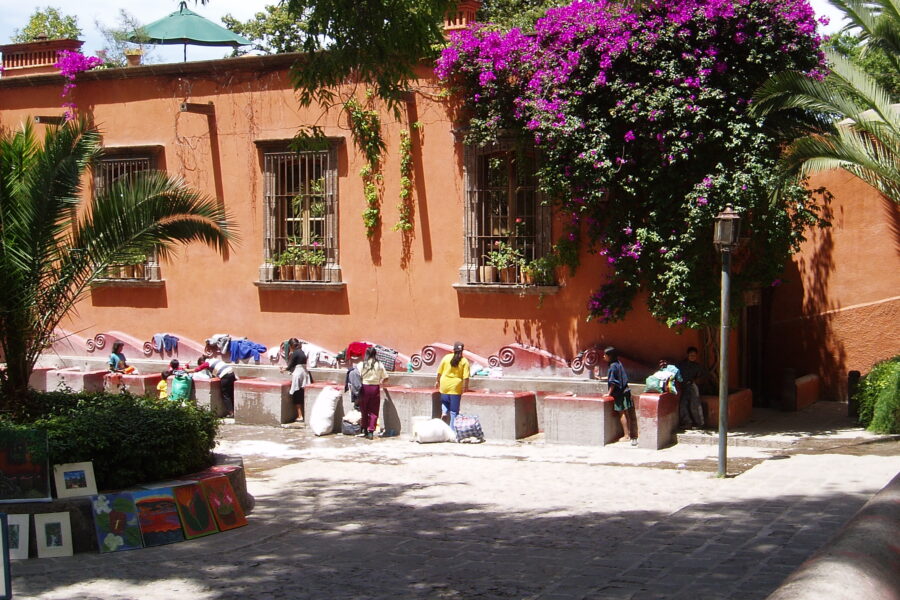
Waiting to start my thirty-minute commute in front of the house we rented on Ojo de Agua.

Walking up Aldama in San Miguel

Walking up Hombono in San Miguel de Allende

Sam’s apartment. He would drop a key via a plastic parachute each day from the tiny window on the extreme right so I could gain access to his apartment.
Sam was a character unto himself. He had lived in Mexico forever, was as brown as a pinto bean and had wild gray hair sprouting from his head. He was also very talented and a hard-edged realistic painter. For most of the three months I was there I was his only student. I was happy for the attention. He was happy for the money. Upon beginning my first lesson I told him to pretend I didn’t know anything. He didn’t have to pretend very hard.

English expat, Sam Seaman, in the living area of his studio apartment.

Sam rented out several rooms in his apartment to various expat borders; everyone had free reign of the kitchen.
Sam gave me a list of paints to buy at the local art store, and I still have four tubes I can’t bring myself to throw away. My colores al oleo consist of azul cobalto, rojo atl, laca geranio and amarillo oscuro; back then they were so inexpensive as to be almost free. Choosing what was to be my first subject was a bit harder, but there was a house with a window that intrigued me bordering the area where the local Mexican women washed their clothes in public cement wash tubs.
I drew the window, thinking that I should start painting from the furthest distance and come forward. I shouldn’t have thought. “Paint the bars first. If the bars are wrong the whole painting is ruined.”
I felt under extreme pressure to get those bars right and get those bars even. As I recall I didn’t even have a ruler or tape to assist in my endeavor.
It took forever to paint the cement surrounding the window. I used the tiniest of brushes to get the speckled gray rectangles the way I thought they should look. Each art lesson lasted three hours, and I probably painted one block of cement per lesson. Everything was a challenge to me.
When it came to the greenery, Sam’s advice was, “Use a pointed brush to do the pointed things, and a round brush to do the rounded leaves.” Then he kept asking if I wanted him to go cut some geraniums so I could study them for the painting. I told him “No.” I kind of liked them as they were—my soft edge vision as opposed to his hard-edged reality.
The trailing vines and the reflections in the window are another story. I’ve never been happy with the reflections, but I finally had to give into my inadequacies and say, this will do. Ultimately, I was faced with painting the trailing green vines. I painted them. I hated them. I took a turpentined rag and wiped the stucco clean.
In the end, I was pleased with my first attempt; until a new student—one of Sam’s apprentices for a nude drawing class—made the comment, “Windows. Children paint windows.”

Working on the vines that surrounded my Window in San Miguel.

This is a photograph of the painting Michael took while still in San Miguel–before he understood the intricacies of photographing oil paintings. After arriving back in the states, Heather, my daughter, requisitioned it for her new house, and it has never been rephotographed. It’s just a tiny bit blurry.








1 Comment
Leave your reply.